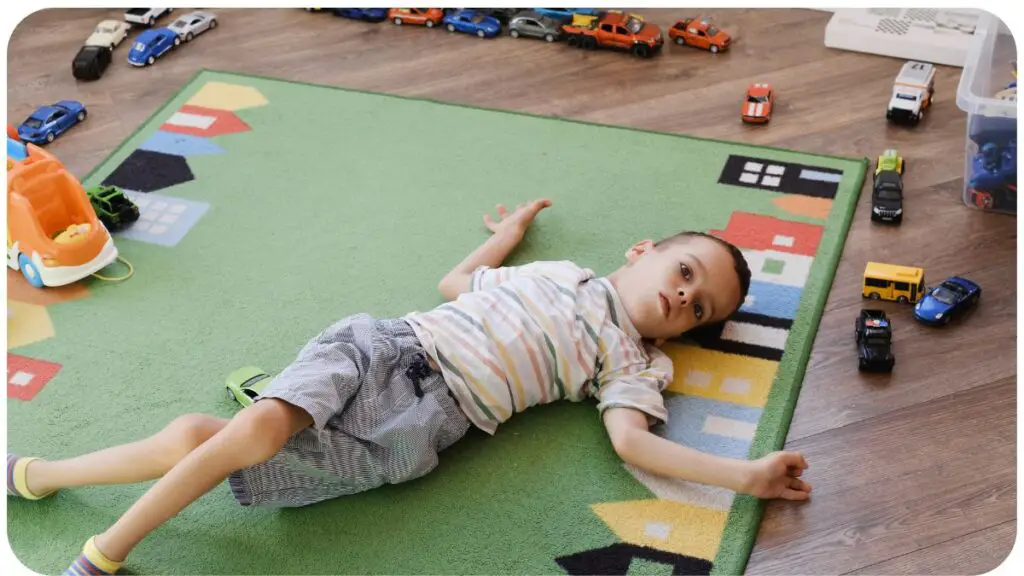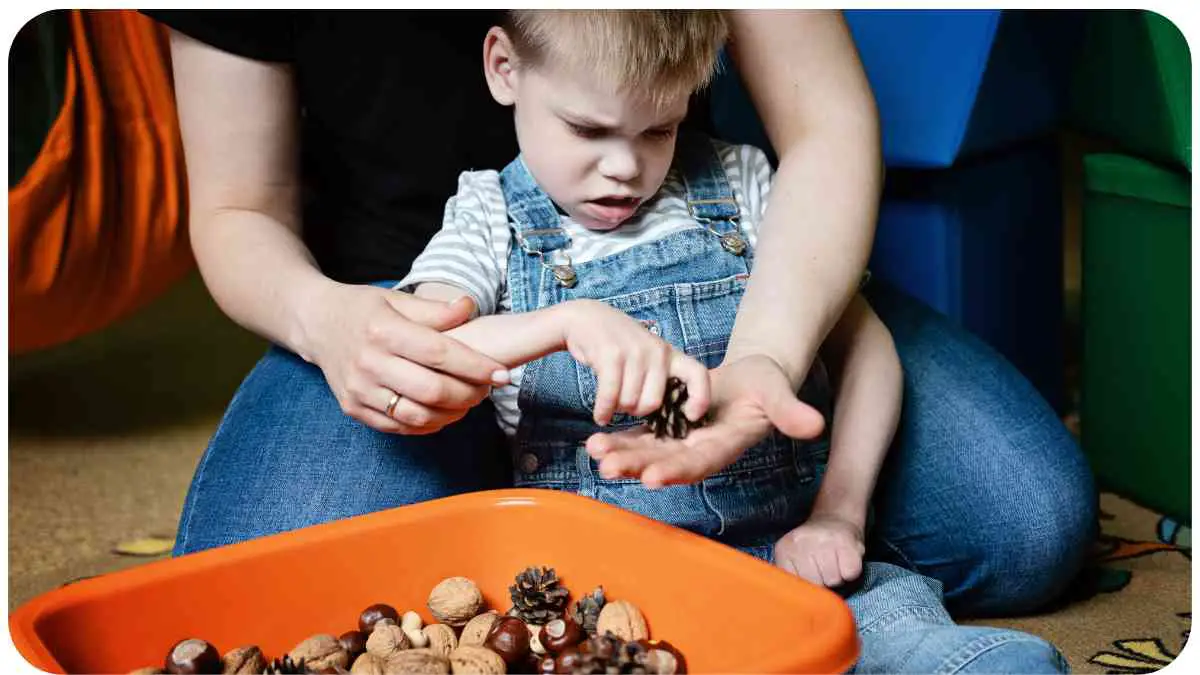As a seasoned professional in the field of autism education and therapy, I have witnessed firsthand the incredible benefits that sensory toys bring to children with autism. Sensory play, which involves engaging the senses through interactive toys and activities, has proven to be instrumental in promoting development and overall well-being for these children.
This article will explore the various advantages of sensory toys and provide insights, tips, and real-world examples to help parents, educators, and caregivers create meaningful sensory play experiences for children with autism.
| Takeaways |
|---|
| Sensory toys are beneficial for children with autism, supporting their sensory processing skills, cognitive development, social interaction, and anxiety management. |
| It’s important to choose sensory toys that cater to the individual needs and preferences of children with autism, considering their sensory sensitivities and developmental requirements. |
| Sensory toys can be purchased commercially or created at home using simple materials, offering customization and cost-effective options. |
| Incorporating sensory toys into daily routines helps provide regular sensory stimulation and engagement, creating opportunities for growth, exploration, and a sense of joy. |
Understanding Autism
Before delving into the benefits of sensory toys, it’s crucial to understand autism and how it affects children. Autism, or Autism Spectrum Disorder (ASD), is a developmental disorder that impacts an individual’s ability to communicate, interact socially, and engage in repetitive behaviors. Each child with autism is unique, with their own strengths, challenges, and sensory preferences.
Importance of Sensory Play for Children with Autism

Sensory play plays a vital role in supporting the development of children with autism. Many children with autism experience sensory processing difficulties, which affect how they perceive and respond to sensory stimuli such as touch, sound, sight, and movement. Sensory toys provide a safe and engaging way for children with autism to explore and make sense of their surroundings, helping them regulate their sensory experiences.
Types of Sensory Toys
There are various types of sensory toys that cater to the specific sensory needs of children with autism. Let’s explore some popular categories:
Tactile Toys
Tactile toys focus on stimulating the sense of touch and include textured balls, soft plush toys, and squishy objects. These toys encourage children to explore different textures and promote fine motor skills development.
| Toy | Description |
| Textured Balls | These balls have various textures like bumps, ridges, or spikes, providing tactile sensory input. |
| Soft Plush Toys | Plush toys with different textures, such as fuzzy, silky, or velvety, offering tactile stimulation. |
| Squishy Objects | Objects that can be easily squeezed or manipulated, giving children a satisfying tactile experience. |
Visual Toys
Visual toys focus on stimulating the sense of sight and include light-up toys, spinning tops, and colorful visual displays. These toys can captivate a child’s attention and enhance visual tracking skills.
| Toy | Description |
| Light-Up Toys | Toys that emit colorful lights or change colors, providing visual stimulation and sensory fascination. |
| Spinning Tops | Tops that spin and create visually intriguing patterns, helping children track movement and improve visual tracking abilities. |
| Colorful Visual Displays | Toys with vibrant colors or mesmerizing visual effects, encouraging visual exploration and engagement. |
Auditory Toys
Auditory toys focus on stimulating the sense of hearing and include musical instruments, sound puzzles, and interactive sound books. These toys provide auditory input and promote auditory processing skills.
| Toy | Description |
| Musical Instruments | Instruments like drums, xylophones, or keyboards that allow children to create and explore different sounds, fostering auditory awareness and creativity. |
| Sound Puzzles | Puzzles that produce sounds when pieces are correctly placed, enhancing auditory discrimination and problem-solving skills. |
| Interactive Sound Books | Books with buttons that play sounds or narrations, promoting auditory processing and language development. |
Proprioceptive Toys
Proprioceptive toys focus on stimulating the sense of body awareness and include items like weighted blankets, compression vests, and therapy balls. These toys provide deep pressure and promote a sense of calm.
| Toy | Description |
| Weighted Blankets | Blankets filled with small weights, providing gentle pressure and promoting relaxation and body awareness. |
| Compression Vests | Vests that apply even pressure to the body, giving a sense of security and providing proprioceptive input. |
| Therapy Balls | Large inflatable balls that offer a range of movement and challenges, promoting postural control and body awareness. |
Vestibular Toys
Vestibular toys focus on stimulating the sense of balance and include swings, rocking chairs, and balance boards. These toys provide movement-based sensory input, which can help improve coordination and spatial awareness.
| Toy | Description |
| Swings | Swings that offer back-and-forth or circular movement, providing vestibular stimulation and promoting balance and coordination. |
| Rocking Chairs | Chairs that rock back and forth, offering rhythmic vestibular input and promoting relaxation and focus. |
| Balance Boards | Boards that require balance and shifting of weight, improving core strength, balance, and proprioception. |
Using a combination of these sensory toys can help children with autism engage their senses and develop important skills. In the following sections, we will explore the specific benefits of sensory toys for children with autism.
Benefits of Sensory Toys for Children with Autism
Sensory toys offer numerous benefits for children with autism, aiding in their overall development and well-being. Let’s dive into some of the key advantages:
1. Improving Sensory Processing Skills
Children with autism often struggle with sensory processing, either being oversensitive or undersensitive to certain stimuli. Sensory toys can help regulate sensory input and improve sensory integration skills.
For instance, playing with textured balls can enhance tactile sensitivity and desensitize children who are hypersensitive to touch. Similarly, vestibular toys like swings can help children with poor balance develop a stronger sense of equilibrium.
2. Enhancing Cognitive Development
Sensory play has a direct impact on cognitive development in children with autism. When engaged in sensory activities, children are actively using their senses and exploring their surroundings. This hands-on approach promotes problem-solving skills, spatial awareness, and cause-and-effect understanding. For example, playing with sound puzzles helps children improve auditory discrimination skills, as they match pieces to create the correct sounds.
3. Promoting Social Interaction
Sensory toys provide opportunities for social interaction and play among children with autism. Sharing sensory experiences can create a common ground for communication and bonding. For instance, collaborative activities like playing with sand and water can facilitate turn-taking, cooperation, and joint attention. These interactions contribute to the development of social skills and peer relationships.
4. Managing Anxiety and Overstimulation
Children with autism often experience anxiety and become overwhelmed by sensory stimuli. Sensory toys, especially tactile and proprioceptive toys, can help them self-regulate their emotions and alleviate anxiety. Squeezing a stress ball or using a weighted blanket provides deep pressure input, promoting relaxation and a sense of security. By incorporating sensory toys into their routine, children can better manage their sensory sensitivities and reduce stress levels.
To truly understand the incredible impact of sensory toys on children with autism, let’s take a closer look at some real-life examples of sensory play activities.
Real-Life Examples of Sensory Play Activities

- Sand and Water Play: Create a sensory table with different textures of sand, as well as containers for pouring and scooping water. This activity stimulates tactile and visual senses while promoting fine motor skills and creativity.
- Playdough and Clay: Provide various colors of playdough or clay along with simple tools like rolling pins and cookie cutters. This activity engages tactile and proprioceptive senses, encouraging hand-eye coordination and imagination.
- Music and Dance: Set up a space for dancing and playing musical instruments. This activity stimulates the auditory, visual, and proprioceptive senses, promoting self-expression, coordination, and rhythm.
By incorporating these sensory play activities into a child’s routine, parents and caregivers can create meaningful experiences that support their development and overall well-being.
- Sensory Bin Exploration: Fill a bin with materials like rice, beans, or colored noodles. Add small toys or objects for children to discover and manipulate within the sensory bin. This open-ended activity engages multiple senses, including tactile, visual, and proprioceptive, while fostering creativity and sensory exploration.
- Obstacle Course: Create an indoor or outdoor obstacle course using different sensory elements. Incorporate activities such as crawling through tunnels, jumping on cushions, or balancing on stepping stones. This activity provides opportunities for vestibular and proprioceptive input, improving motor skills, coordination, and body awareness.
- Nature Walks: Take children on nature walks to explore different natural textures, sights, and sounds. Encourage them to touch leaves, listen to bird songs, or feel the texture of tree bark. This activity promotes sensory awareness, mindfulness, and connection with the environment.
Remember, when engaging children with autism in sensory play activities, it’s important to consider their individual preferences and sensitivities. Some children may have strong likes or dislikes towards certain textures or sensations, so be mindful and respectful of their needs.
Conclusion
In conclusion, sensory toys play a crucial role in supporting the development and well-being of children with autism. The benefits of sensory play are numerous, including improved sensory processing skills, enhanced cognitive development, social interaction opportunities, and anxiety management. By incorporating sensory toys and activities into a child’s routine, parents, educators, and caregivers can create meaningful and engaging experiences that promote growth and foster a sense of joy and exploration.
It is my hope that this article has provided valuable insights, tips, and examples to inspire and guide you in incorporating sensory toys into the lives of children with autism. Embrace the power of sensory play, and witness the incredible impact it can have on these exceptional children.
Further Reading
Here are some helpful resources for further reading on sensory toys for children with autism:
- Sensory Toys for Autism: A Holiday Gift Guide: This blog post provides a comprehensive guide to choosing the right sensory toys for children with autism, especially during the holiday season. It offers valuable insights and recommendations to help parents and caregivers make informed decisions.
- What Is a Sensory Toy and How Do They Help?: This informative article from Autism Speaks explains the concept of sensory toys and their significance in supporting children with autism. It delves into the benefits of sensory toys and provides practical tips for selecting and incorporating them into daily routines.
- Best Sensory Toys for Children with Autism: Carmen B. Pingree Autism Center of Learning shares a blog post highlighting some of the best sensory toys available for children with autism. It offers detailed product recommendations and insights to help parents and educators choose appropriate sensory toys based on their child’s needs.
FAQs
Here are some frequently asked questions about sensory toys for children with autism:
What are sensory toys?
Sensory toys are specially designed toys that engage one or multiple senses, such as touch, sight, sound, or movement. These toys are intended to provide sensory stimulation, help children explore their senses, and promote their overall development.
How do sensory toys help children with autism?
Sensory toys can help children with autism by improving their sensory processing skills, enhancing cognitive development, promoting social interaction, and managing anxiety or overstimulation. These toys provide a safe and engaging way for children to regulate their sensory experiences and explore their environment.
How do I choose the right sensory toys for my child with autism?
When choosing sensory toys, consider your child’s individual preferences, sensory sensitivities, and developmental needs. Opt for toys that align with their sensory preferences and offer appropriate levels of sensory input. It’s also important to prioritize safety and select toys that are age-appropriate and made from non-toxic materials.
Can I make my own sensory toys at home?
Yes, you can create sensory toys at home using simple materials. DIY sensory toys can include items like sensory bottles, sensory bins, homemade playdough, or textured objects made from household items. Making your own sensory toys allows for customization and can be a fun and cost-effective way to engage your child in sensory play.
How can I incorporate sensory toys into my child’s daily routine?
Integrating sensory toys into your child’s daily routine can be beneficial. Create a dedicated sensory play area at home, introduce structured sensory playtime, and include sensory activities during everyday tasks. By consistently incorporating sensory toys into their routine, you can provide your child with valuable sensory experiences that support their development and well-being.

Meet Hellen James, the multi-talented writer and nurturing mother who takes young readers on a thrilling journey through her sensory-infused blog. Drawing inspiration from her own experiences as a parent.

